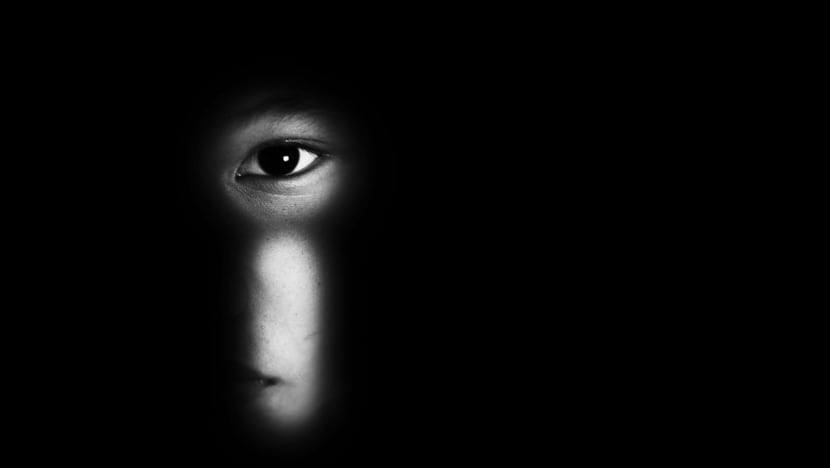Commentary: Killed by her father - remember Umaisyah’s name as we learn lessons from her tragic death
Two-year-old Umaisyah, who was killed by her father and whose burnt remains were left undiscovered for years, would have been 12 this year. We owe it to Umaisyah and every child who’s been abused to remember her name, says CNA's Alison Jenner.

File photo. Umaisyah's parents may have committed an unthinkable crime, but her death compels us to ask difficult questions of ourselves and of society. (Photo: iStock/Favor_of_God)
SINGAPORE: “Umaisyah deserved so much more." "It is important to my mind that we all remember her by her name.”
These were the poignant words of High Court judge Aedit Abdullah as he handed down a sentence of 21-and-a-half years in prison along with 18 strokes of the cane to Umaisyah’s father on Tuesday (Sep 19), calling his actions “heinous”.
The cruelty two-year-old Umaisyah suffered is hard to read. She was hit with a belt and hanger, slapped, caned and punched. On the day she died in March 2014, she was hit so hard she had a seizure. There was blood in her mouth and liquid came out of her mouth and nose.
To cover up her death, Umaisyah’s father - along with her mother - placed the little girl’s body in a metal pot and set it on fire in the back of a lorry. They then sealed her charred remains in a cardboard box and kept it under their kitchen stove.
The grim details, chronicled in legal documents, are enough to send shivers down anyone’s spine.
What makes the case even sadder is that Umaisyah’s remains were only found five years after her death - and only by chance after her uncle opened the sealed box in 2019.
It’s astounding how her absence, and death, went unnoticed for half a decade. Umaisyah's absence should have raised alarms, triggered investigations.
OMINOUS SIGNS THAT WERE MISSED
Umaisyah's parents may have committed an unthinkable crime, but her death compels us to ask difficult questions of ourselves and of society. How did this happen? Did anything go wrong in the system designed to shield her from harm? And what can we do to ensure that no child suffers a similar fate?
Child protection agencies, educators, healthcare professionals, and even neighbours all play crucial roles in identifying and reporting child abuse. In Umaisyah's case, it's evident that something may have gone wrong.
The family was known to social workers - the girl had been placed in foster care when she was only three to four months old, after her father was detained in a drug rehabilitation centre and her mother was assessed to be unable to take care of her.
When Umaisyah’s foster mother visited the girl in 2013 a few months after she was returned to her parents, she noticed that Umaisyah had lost weight, become more withdrawn and was less communicative.
In 2017, an officer from the education ministry contacted Umaisyah’s parents to check why she had not registered for Primary 1. The officer was told that the parents were estranged, and that the girl was being looked after by relatives in Malaysia.
NOT AN ISOLATED INCIDENT
Umaisyah’s death raises critical questions about the efficacy of our child welfare systems, the coordination between agencies, and the mechanisms in place to safeguard children.
The Ministry of Social and Family Development (MSF) had said in 2019 after her case was first discovered that it was reviewing how to further strengthen its network of agencies and community organisations.
When asked for updates on Umaisyah’s case, it said it was unable to provide any given that the mother's case is pending before the courts.
Umaisyah’s case is not an isolated incident; it is a reflection of a broader issue - an issue that plagues communities worldwide. Child abuse and neglect persist, often concealed behind closed doors, and it is society’s collective responsibility to break down those doors.
There have been several notable cases of children purportedly killed by their parents in Singapore. A father is currently on trial for allegedly assaulting his five-year-old daughter to death in August 2017. In the months leading up to her death, the girl was allegedly confined naked in the toilet with her younger brother. The family was known to social workers, with the siblings placed in foster care by the Child Protective Service (CPS) in 2014 and returned to the man in 2015.
In an unrelated case, a mother who scalded her five-year-old son to death in 2016 was sentenced last year to life imprisonment. The woman and her husband kept the boy in a cat cage and tortured him with pliers. The boy was fostered out to a family friend shortly after his birth and returned to his parents when he was four years old.
Meanwhile, a man in February pleaded guilty to abusing his 11-year-old stepdaughter to death in November 2020. The girl did not go to school for two months before she died.
When Members of Parliament raised questions in March about the procedures for investigating suspected child abuse following the girl’s death, MSF said that a student’s absence from school alone is not “sufficient grounds” for the CPS to invoke its powers under the Children and Young Persons Act.
It was reported that a student welfare officer from the girl’s school did visit the family, but was told that the girl was sleeping. After repeated video-call requests, the officer managed to speak to the girl but did not observe any injury because the environment was dim and the victim was wearing long-sleeved pyjamas.
Therein lies a challenge for welfare officers: The nature of child abuse is that it is not easy to detect. It is not possible to expect that they detect every single case, particularly if parents are determined to hide the truth.
DON’T FORGET THE NAME UMAISYAH
The burden on social workers is a weighty one, often overlooked by the public. They manage caseloads of dozens of children, leaving them with limited time to truly grasp the dynamics within each family.
CPS investigated 2,141 abuse cases in 2021, an increase of 63 per cent from the 1,313 cases in 2020.
Some have called for the social care system to swiftly and decisively intervene to safeguard children by removing them from abusive families, but there are multiple considerations when determining what is best for a child and social workers can face hostility from parents and backlash against their decisions.
We need to be clear about the true complexity of the problems in social care before we decide how to fix it.
Umaisyah - who should have known nothing but love and laughter - experienced a living nightmare. One that ultimately led to her killing.
Her tragedy highlights the need for a more vigilant community. Even as institutions do their utmost to protect children, we must actively look out for one another. Neighbours, friends, and extended family members should be educated about the signs of abuse and encouraged to report concerns promptly.
If Umaisyah was still alive, she would have been 12 this year, most likely cramming for the PSLE.
We owe it to Umaisyah and every child like her to learn from this tragedy and take concrete steps toward preventing such horrors in the future. We cannot afford to look away, to become complacent, or to forget Umaisyah's name.
Alison Jenner is Supervising Editor at CNA Digital where she oversees commentaries.























